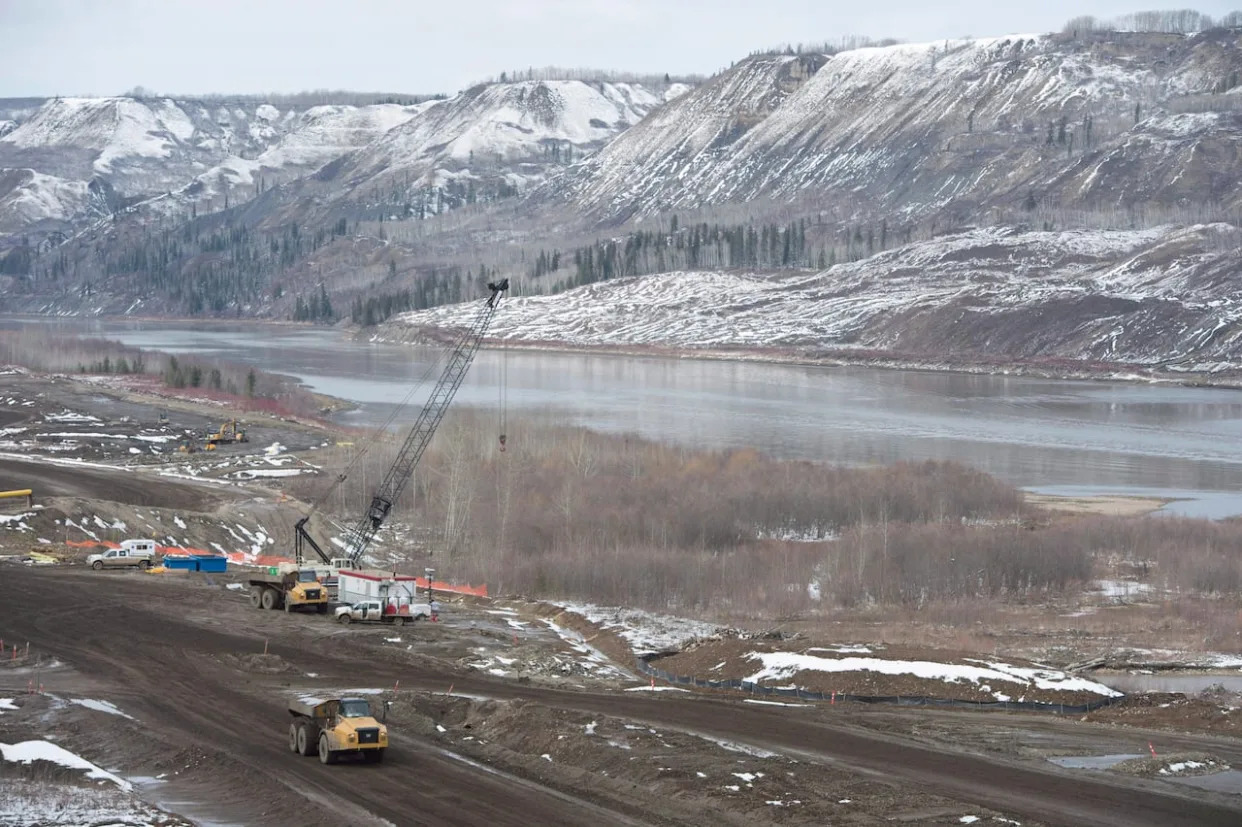Every day since a wildfire began menacing the city of Fort McMurray, Alta., grimy, exhausted firefighters have been spilling out of helicopters at the end of another one of the toughest shifts around.
Hard, manual labour?
"Yes," said Gavin Hojka, incident commander in charge of 172 wildland firefighters. "Very."
There is no road access to the front lines of the fire, which did not grow Thursday thanks to cool, damp weather and the hard work of the crews.
Teams of between eight and 20 are dropped off by helicopters early each the morning. They make their way on foot to the flames carrying pumps, chainsaws, shovels, axes and hoses — lots and lots of hoses.
"They'll be bringing a dozen boxes of hose for the day," Hojka said.
"Every single day we're bringing out more hose. There are thousands and thousands of feet of hose."
Each box of hose weighs about 27 kilograms. The pumps that fill them weigh about 30 kilograms, carried on someone's back to the nearest beaver pond, stream or river.
With water and hand tools they attack the fire for between 12 and 14 hours at a stretch, fuelled only by the bag lunch in their packs. Then the helicopter comes to pick them up for a little rest before they're back at it.
"We do everything we can to bring them home at night," said Hojka. "We make sure we have someone flying around in a helicopter being an eye in the sky, a lookout."
Still, the fire remained out of control and about 6,600 residents of the oilsands hub remained out of their homes.
Neighbourhoods such as Beacon Hill and Grayling Terrace were deserted Thursday, garbage cans lined up neatly on driveways beside cars, trucks and ATVs. Police, emergency workers and birds were the only ones around.
In Grayling Terrace, crews were setting up sprinklers capable of spraying 600 litres of water a minute on trees and bush near the homes. In Beacon Hill, young poplars near homes were sprayed a deep shade of orange from fire retardant — a portion of the 168,000 litres of the phosphate-based chemical that's been sprayed around the city.
Still, the fire remained about 200 square kilometres in size and just under six kilometres from Fort McMurray's southern outskirts. Despite the favourable weather, evacuees aren't expected to be allowed back until after the long weekend.
The city's court system was temporarily shut down and schools were closed.
Thousands of residents fled the city on Tuesday, fearing a repeat of the 2016 wildfire that forced out the entire community and torched more than 2,400 homes.
But the city was slowly coming back to as normal as possible.
Grocery stores were open and well stocked, with an abundance of toilet paper. Restaurants, many of which closed Tuesday, reopened.
"We closed down for the initial day, just so all of our staff could look after their families," said Shelby Thompson of Montana's BBQ and Bar.
"We opened the next day," Thompson said. "Regular hours."
At the city's Peter Pond Mall, there was initial confusion about Tuesday's evacuation order and stores shut their doors, said Shauna Hannam, the mall's specialty leasing manager.
Many employees, fearing a 2016 rerun, "rushed to get ahead of the game," she said.
"For a lot of people, it was history repeating itself: 'I'm just going to get my family out of here right now.'
"The next day, when half the city wasn't evacuated, that's when the confusion set in. People weren't sure whether they were going to work."
Slowly, they are. Hannam said more than half the mall's stores were open Thursday.
Other fires across Western Canada have also forced residents out of their homes.
In northern British Columbia, a blaze threatening Fort Nelson was about 120 square kilometres in size but heading away from the town. The community of 4,700 remained under an evacuation order.
Rob Fraser, the mayor of the Northern Rockies Regional Municipality, said some structures were damaged on rural properties outside Fort Nelson. He did not say how many or if they included homes.
Cooler temperatures and higher humidity were expected to help firefighters over the coming days. Fraser said there was no timeline for when evacuees might return.
"We don't want to be in that situation where we turn people back to the community and three days later we just send them out again," Fraser said. "That would be just a nightmare."
In Manitoba, 675 people have been forced out of the area in and around the northwestern community of Cranberry Portage. There was no word on when they might be able to return.
The province said the fire remained less than two kilometres from the community. Power and phone service have been restored.
This report by The Canadian Press was first published May 17, 2024.





